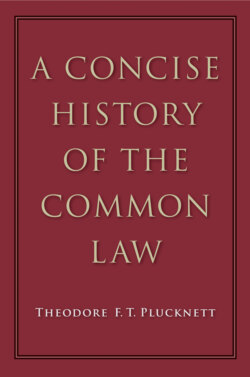Читать книгу A Concise History of the Common Law - Theodore F. T. Plucknett - Страница 135
На сайте Литреса книга снята с продажи.
THE CONNECTION BETWEEN KING’S BENCH AND THE COUNCIL
ОглавлениеFor a long time it was a striking feature of the court before the King himself (Coram Rege) that it was closely associated with the Council. Many magnates might attend its solemn sessions; for less important business a small group of officials was sufficient. Although the two procedures which we have mentioned very soon appear (jurisdiction in error from the Common Pleas, and the trial of the more important pleas in which the Crown was concerned), they are for a long time mingled with the political and administrative duties of the Council. In the end, these two procedures were both entrusted to a small group of professional justices who were specially commissioned “to hold pleas before the King himself”. In other words, the King’s Bench becomes a separate institution, early in the reign of Edward I. For long after that date, however, there still remained a close connection between the King’s Bench and the parent body. Just as in earlier times a piece of private litigation in the King’s Bench, which raised a difficult point as to whether trial by battle lay or not, was adjourned “because there were not enough members of the King’s Council present”,1 so “the recurrence of pleas before the King and his council, Coram Rege et consilio suo, in this manner, can hardly be said to be discontinued until the reign of Edward III”.2 In the reign of Edward I, therefore, although the King’s Bench had its own establishment, working its own procedure, and may therefore be regarded as a separate institution, there nevertheless existed a good deal of intimate contact both then and later between it and the Council.
